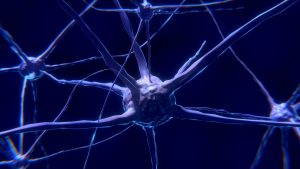Diabetes mellitus and its relation to diabetic retinopathy
The type 2 diabetes mellitus (T2DM, Type 2 Diabetes Mellitus) is among the most widespread metabolic diseases in the world and can be associated with diabetic retinopathy (DR-DR, Diabetic Retinopathy), a serious ocular complication that involves the retina's microvascular network and can lead to blindness.
 Research progress has shown that retina and brain have important similarities. For example, certain anatomical, physiological and embryological features of the retinal vascular network are similar to those found in cerebral blood vessels. Furthermore, the RD can lead to retinal neurodegeneration, which shows pathogenetic mechanisms similar to those of some neurodegenerative diseasessuch as dementia and Alzheimer's disease, for which diabetics are more at risk than healthy individuals.
Research progress has shown that retina and brain have important similarities. For example, certain anatomical, physiological and embryological features of the retinal vascular network are similar to those found in cerebral blood vessels. Furthermore, the RD can lead to retinal neurodegeneration, which shows pathogenetic mechanisms similar to those of some neurodegenerative diseasessuch as dementia and Alzheimer's disease, for which diabetics are more at risk than healthy individuals.
For this reason, the scientific community has long assumed that the patients with RD could show abnormalities in the central nervous system.
In fact, numerous studies conducted so far using neuroimaging have shown that individuals with DR present numerous abnormalities in brain structure and function. Thanks to recent advances in the field of graph theory applied to the resting-state functional magnetic resonance imaging (fMRI), functional Magnetic Resonance Imaging)However, today it is also possible to characterise the topological properties of the brain connectomei.e. the set of neural connections within the brain.
The brain connectome
The complex and efficient architecture of the human brain connectome consists of a series of knots (brain regions) and bows (connections between nodes) that constitute a wide area network scaleand several nets small-worldinvolving only a few nodes that are very close to each other to enable rapid transmission of information.
In a recent study using fMRI and graph theory, the topological organisation of the brain connectome of patients with DR was altered compared to that of healthy subjects. In particular, subjects with RD presented a reduction both in the coefficient of clusteringwhich indicates the degree of connectivity between the elements of a functional network, which in thelocal efficiencya parameter that reflects the ability to transmit information quickly and effectively within interconnected regions.
In patients with DR, these alterations were found in numerous functional networksincluding the visual function (VN, Visual Network), and are thought to cause a slowing down the transmission and processing of information which could be responsible for cognitive deficits often found in these patients.
According to the authors, the retinal degeneration and the consequent decrease in visual acuity observed in individuals with DR would lead, in the brain, to a reduction of inputs from the retina, and this reduced stimulation would be one of the causes behind the anomalies observed in VN.
In patients with DR, the onset of cognitive deficits has also been associated with the presence of connectivity alterations, found in the default brain network (DMN, Default-mode Network), a network of great importance that is activated during rest and suppressed when performing tasks requiring concentration, whose activity is involved in several essential physiological functions such as cognition and the management of emotional states.
These findings may represent an important step forward in understanding the mechanisms associated with vision loss and the onset of cognitive deficits related to DR, a condition that is unfortunately set to become increasingly common.
Source
Huang X. et al, Disrupted topological organisation of human brain connectome in diabetic retinopathy patients. Neuropsychiatr Dis Treat. 2019; 15:2487-2502
Dr. Carmelo Chines
Direttore responsabile
